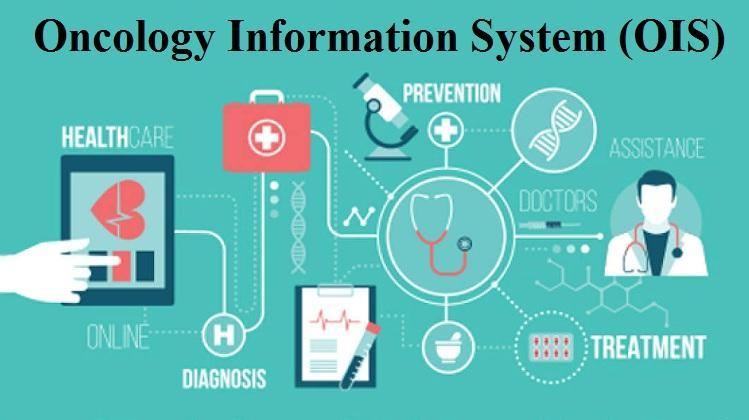The US$7.1 Billion Digital Backbone: Oncology Information System Market Outlook 2035 and the Era of AI-Driven Precision Oncology

The global battle against cancer is at an inflection point, moving swiftly from standardized treatment protocols to highly personalized, molecular-level care. This dramatic shift is underpinned by an essential technological framework: the Oncology Information System (OIS). Far from being a mere record-keeping tool, the OIS has evolved into the digital backbone of the cancer care ecosystem. This transformation is clearly reflected in the market’s robust growth trajectory: valued at US$ 3.3 Billion in 2024, the global OIS industry is projected to nearly double, growing at a CAGR of 7.2% from 2025 to 2035, and reaching a significant valuation of US$ 7.1 Billion by the end of the forecast period.
This exponential growth is not incidental; it is a direct consequence of macro-level healthcare imperatives, driven by the sheer global burden of cancer, the imperative for cost-efficiency, and the revolutionary integration of advanced digital technologies.
The Forces Driving the US$7.1 Billion Surge
The projected growth to US$ 7.1 Billion is propelled by a confluence of powerful drivers that are fundamentally reshaping the delivery of cancer care:
1. The Global Cancer Burden and the Need for Centralized Care
The most critical driver remains the escalating worldwide incidence of cancer. As the patient pool expands, hospitals and specialized oncology centers face an overwhelming volume of complex, multidisciplinary data—radiology images, genomic sequencing results, pathology reports, and radiation treatment plans. The OIS provides the unified, centralized platform necessary to manage this high-volume, high-stakes information, ensuring that every member of the care team, from the radiation oncologist to the medical physicist, is working from a single, accurate, and real-time dataset. This capability is paramount for preventing errors and coordinating seamless, timely interventions.
2. The Mandate of Precision Oncology
The shift toward precision oncology is the technical engine of market growth. Precision medicine demands the integration of genomic, proteomic, and clinical data to tailor treatment to an individual’s tumor profile. Traditional systems cannot handle this complexity. Modern OIS platforms are specifically designed to ingest and interpret multi-omics data, link it to clinical trial eligibility, and support molecular tumor boards. As targeted therapies and immunotherapies become standard, the OIS's role in facilitating biomarker-driven decision-making will only become more essential, directly fueling the demand for more sophisticated software and services.
3. AI and Machine Learning Integration
The future of the OIS is intertwined with Artificial Intelligence (AI). AI-powered analytics are moving from niche applications to core features of OIS platforms. By 2035, AI will not just manage data; it will actively assist clinical staff. Use cases include:
-
Contour Delineation: AI algorithms reduce the time and variability in defining tumor and organ boundaries in radiation therapy planning.
-
Predictive Modeling: Algorithms will forecast treatment response, risk of toxicity, and even potential disease recurrence based on historical patient data and real-world evidence (RWE).
-
Optimizing Workflows: AI will automate administrative tasks, such as scheduling, billing, and resource allocation, dramatically improving clinic throughput and efficiency—a major focus for providers grappling with rising costs.
4. The Shift to Cloud-Based Deployment
The industry is experiencing a decisive migration from on-premise solutions to cloud-based OIS platforms. The cloud offers unparalleled scalability, accessibility for multi-site cancer networks, lower upfront capital expenditure, and easier, more frequent software updates. This deployment model is particularly attractive in emerging economies and for smaller oncology practices, enabling them to adopt advanced technology without massive infrastructure investments, thereby expanding the total addressable market.
Challenges and Opportunities on the Road to 2035
Despite the promising growth forecast, the OIS market must navigate significant challenges:
-
Interoperability and Data Silos: Integrating OIS with disparate hospital IT systems—such as Electronic Health Records (EHRs), Picture Archiving and Communication Systems (PACS), and Laboratory Information Systems (LIS)—remains a technical hurdle. The market's potential depends on achieving true, seamless, and standardized data exchange.
-
High Implementation Costs: The initial expense of licensing, customizing, and training staff on a comprehensive OIS can be prohibitive, particularly for facilities in resource-constrained regions.
-
Data Security and Privacy: Handling sensitive patient genomic and clinical data requires ultra-robust cybersecurity measures. Compliance with stringent global regulations (like HIPAA, GDPR, and emerging regional laws) is a continuous and complex requirement that dictates system design.
These challenges, however, also define the major commercial opportunities. Companies that can deliver highly interoperable, affordable, and fully secure, cloud-native OIS solutions will capture significant market share. The need for specialized Professional Services—consulting, implementation, and training—is expected to grow faster than the software segment itself, as organizations require expert assistance to leverage the full power of their US$7.1 Billion digital investment.
Regional Dynamics: North America Leads, Asia Pacific Accelerates
Geographically, North America is expected to retain its dominant market share through 2035, driven by sophisticated healthcare IT infrastructure, high adoption of advanced precision medicine techniques, and favorable reimbursement policies. However, the Asia Pacific region is projected to be the fastest-growing market, fueled by rapidly increasing cancer incidence, rising healthcare expenditure, and governmental initiatives to modernize public and private hospital systems. India and China, in particular, present lucrative long-term opportunities as they invest in the digital tools necessary to manage their enormous patient populations.
In conclusion, the journey of the Oncology Information System market to US$ 7.1 Billion by 2035 marks a pivotal moment in healthcare. The OIS is no longer a passive administrative tool but an active, intelligent, and integrated platform central to delivering precision cancer care. Success in this growing market will belong to vendors who can harness the power of AI and the cloud to solve the twin challenges of data complexity and workflow efficiency, ensuring that the digital backbone of oncology care is robust enough to support the next generation of life-saving treatments.
- Art
- Causes
- Crafts
- Dance
- Drinks
- Film
- Fitness
- Food
- Games
- Gardening
- Health
- Home
- Literature
- Music
- Networking
- Other
- Party
- Religion
- Shopping
- Sports
- Theater
- Wellness


